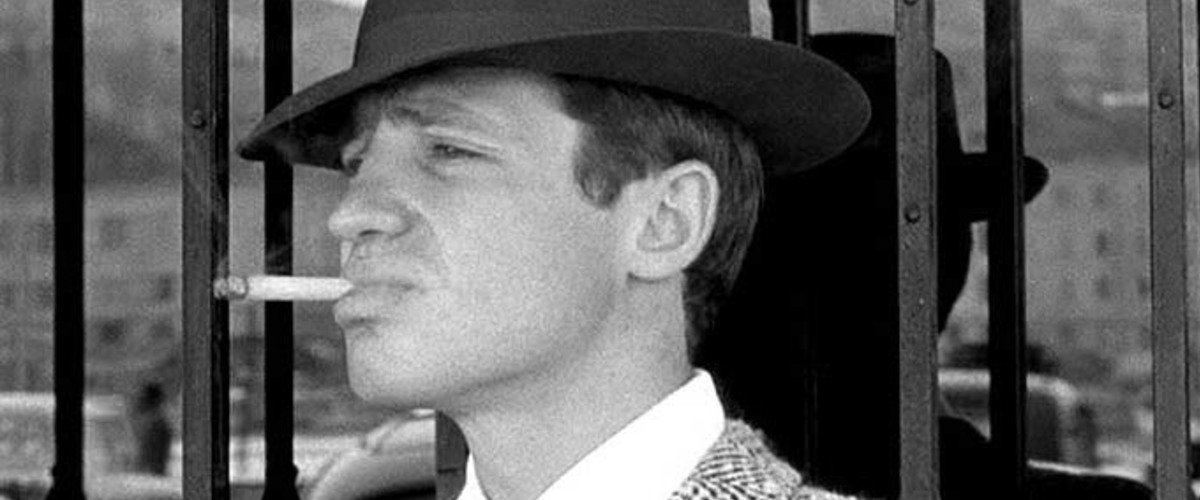Let’s kick off this series with the film that started it all– the original modern movie, the critical movie, the independent movie, the meta-movie. There are more books, articles and essays written on this film than any other film ever made, and for good reason.
“Breathless” is a 100-meter dash. It’s a face-paced film, even in the modern sense of the word. There’s an unstoppable, rebellious quality to the film. It’s like a child sprinting through the fields; Jean-Luc Godard, the director, is the child here of course, and like any other child, he misbehaves uncontrollably. He doesn’t care about rules and occasionally curses at his mother. Godard uses shaky handheld cameras, jump-cuts and breaks the fourth wall repeatedly. He throws exposition and composition out the window. He scribbles like a child on a piece of paper and places it on top of a Rembrandt while giving everyone the middle finger.
The authority to be this rebellious and pull it off was in his name. Godard had probably seen more films in his lifetime than the entire student body of the University of Miami School of Communication. He was a film critic– and a very successful one. He consumed, reviewed and analyzed every important film, making him the original film nerd, a predecessor to the Tarantinos, the Scorseses and the Spielbergs of the world. And then one day he decided to stop writing about film and set out to create one that would put cinema in the front-run of the art world.
Like Kandisky’s “Composition VII” or Joyce’s “Ulysses,” he wanted to spark the next revolution in art. But most specifically, he wanted the next revolution to occur in film. Like any other medium in modern art, and I do speak of this in the most technical sense, the philosophy was the same. It was to disregard tradition and pursue the spirit of experimentation.
Godard had acquired a lifetime of knowledge about how to make a film. And in the spirit of the modern age, he threw the book out the window.
Set in Paris, “Breathless” is a story about a charismatic psychopath named Michel, played by Jean-Paul Belmondo, who falls in love with an American girl, Patricia, played by Jean Seberg. It’s the original Bonnie and Clyde, the Kit and Holly of Terrence Malick’s “Badlands.” It’s the 60s heart and flesh. It’s the marriage of American and French Cinema.
That’s one story. The real story is about a guy obsessed with Hollywood cinema. He is in love with Humphrey Bogart, James Cagney and all those gangster guys from black-and-white movies. He’s obsessed with the persona: the apathy, the charisma, the suaveness. He wants to be like them. Even the crimes they commit are cool. He falls in love with an American. Michel’s determination in life is to live like he thinks Americans live, and he achieves so by completely disregarding reality.
Godard is Michel, also obsessed with American cinema. Howard Hawks, Alfred Hitchcock, Fritz Lang– those are his idols, and the film is filled with references to them. In a world full of film-references, of social commentary, the world of the meta, it’s fulfilling to see the cornerstone of this tradition. The film was dedicated to Monogram Pictures, a small unknown studio from France which Godard was very fond of. Their films were original, with tiny budgets and made by up-and-coming filmmakers. Their intent was to preserve French cinema in the overwhelming abundance of American films. Godard kicked off the French cinematic tradition by using the American formula and destroying the mirror. French cinema had to understand its obsession with American cinema and how it overshadowed their potential.
Godard made “Breathless” with no rigs, no expensive equipment and on no set but the streets of France. He laid the foundations for those aspiring film-geeks who would one day pick up a camera and not be intimidated by the grandiose budgets of Hollywood movies.
He intended a film for the museums, but instead gave cinema to the people.







